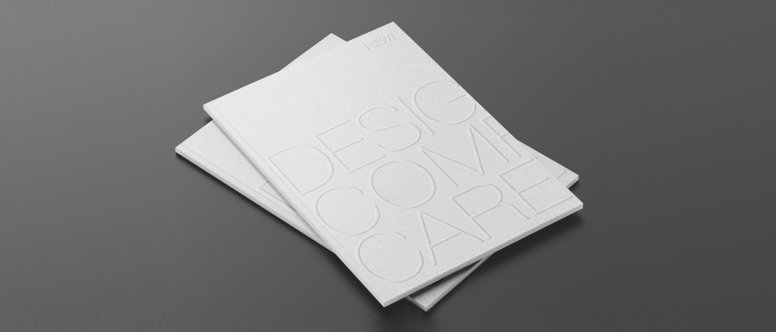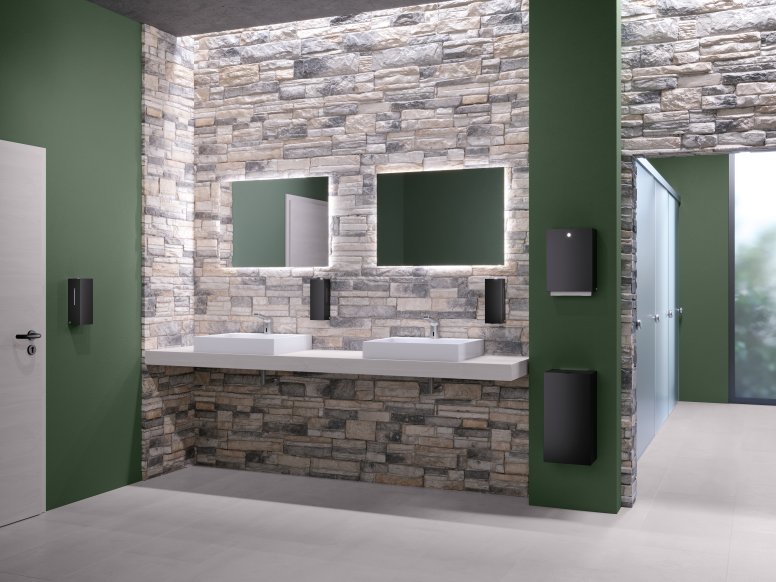HEWI / Knowledge
Universal Design – the focus is on people
The move towards spaces and products that better serve the needs a diverse set of users began in the US in the early 1960’s with the issuance of the first national accessibility standard. Over the past 60 years, the practice of accessible design has grown so that most non-residential construction in the US is required to include significant elements of accessible design. The accessibility requirements in federal law and building codes that have been in force over the past many decades have produced a markedly more usable and safe built environment, including features such as step-free entrances, wider doorways, low-force controls, easy-to-grasp door hardware, among many other features.
More accommodating restrooms are a signature achievement of accessible design too. For example, mounting locations and the proximity of equipment are important for people who use wheelchairs or who may have limited reach range. The design standards reflect these users’ needs in the mounting heights for common accessories, such as mirrors, towel dispensers, waste receptacles, soap dispensers, sanitary napkin/ tampon vendors, grab bars, toilet tissue, seat-cover dispensers, and sanitary napkin disposals.

The primary identified user group for accessible design has been people with disabilities, with an emphasis on those with significant mobility impairments. But since the 1980’s we have come to understand that there is a much broader user group who benefits from more responsive design. This understanding has been aided by the emergence of a related design paradigm: Universal Design. The term universal design first entered into usage in the mid-1980’s by United States (US) architect, Ronald L. Mace, FAIA. Since then, the concept of universal design has spread worldwide and has influenced and joined related concepts such as Design for All, Life Span Design, and Inclusive Design.
Universal design also emerged from understanding that federal and state accessibility requirements are not only legal minimums, but can be functional minimums as well. Few would argue that the US’s accessibility requirements offer optimal functionality. Universal Design brings us closer to the goal of optimal design outcomes. A universal approach also recognizes the need for better design to be applied to into more products and spaces, creating a mainstreamed appearance. For example, early attempts at creating accessible lavatories in restrooms often resulted in a singular, solitary accessible unit, right next to a line of inaccessible sinks. Happily, we now design the entire line of restroom lavatories with accessible knee space, easy-to-use accessories and faucets. Now, everyone has equal access and use of all sinks.
Universal design recognizes, values, and accommodates the broadest possible spectrum of human ability in the design of all products and environments. It requires sensitivity to and knowledge about people of all ages and abilities. It helps reduce the need for special features and spaces for “special” people, which are often stigmatizing, embarrassing, different looking, and usually more expensive.
While the accessibility standards were created to principally benefit people with particular disabilities, experience has shown that environments built with accessible and universal design features often benefit a wide range of users, including people that we might traditionally identify as having impairments but also others not thought of in the same way:
- Children
- People who are short, tall, large or heavy
- People with temporary health problems
- Older adults
- Adults of any age who need assistance in the restroom
- People who use mobility equipment such as power wheelchairs or larger scooters
Demographic changes that include the growth in the population of older adults, convey an added urgency to these design trends.
With respect to the restrooms in public buildings, here are a few examples of good design practice and universal design in restrooms:
Adopt an explicit objective of providing unobstructed routes of travel within the restroom to each fixture and accessory. Provide alcoves for baby changing stations and design for ample clear floor space and turning spaces. Extra space is valuable in crowded restrooms and for those who use crutches, canes, walkers or wheelchairs.
Touchless controls have been growing in popularity for many years. They are useful for those with reach or grasping challenges. The ongoing global pandemic has also reminded us of the hygiene advantages of touchless fixtures and accessories.
Where possible, provide door-free restroom entrances. This is a real advantage for people with reach or grasp limitations, for those who use mobility equipment, or those with packages or luggage, avoiding the need to maneuver through and around hinged doors makes that path of travel much easier, and more hygienic too.
Single use restrooms have also become more popular in recent years. Also called family restrooms, they can be a real boon for adults attending to medical issues, for parents changing diapers, and for opposite gender adults assisting other adults with bathroom tasks. Single user restrooms are also the preferred location for adult changing stations.
Full height mirrors allow people who are tall, short, seated, or children to have a complete view of themselves.
Universal design in restrooms and the products that are used in them, has come of age. I have known HEWI’s product line for over 35 years and have admired their dedication to making high quality, durable, functional, and good looking products. Of course, HEWI’s commitment to better, more usable design goes back many decades and has long contributed to the movement for more usable and useful environments.
“Universal design in restrooms and the products that are used in them,
has come of age.”
— Richard Duncan
RICHARD DUNCAN, MRP
Richard Duncan is the Executive Director of the Universal Design Institute and the Better Living Design Institute in Asheville, North Carolina. Richard has spent over 35 years in the field of architectural and product accessibility and universal design in residential, public, and transportation environments. He has extensive experience in accessible and universal design, costs, materials, and products. Richard’s projects, seminars, courses, and speaking engagements have taken him around the world.
Download now for free
Get new perspectives on universal design, be inspired by architectural solutions, and discover how creatively accessibility can be designed!
Download your personal issue as a PDF for free.



